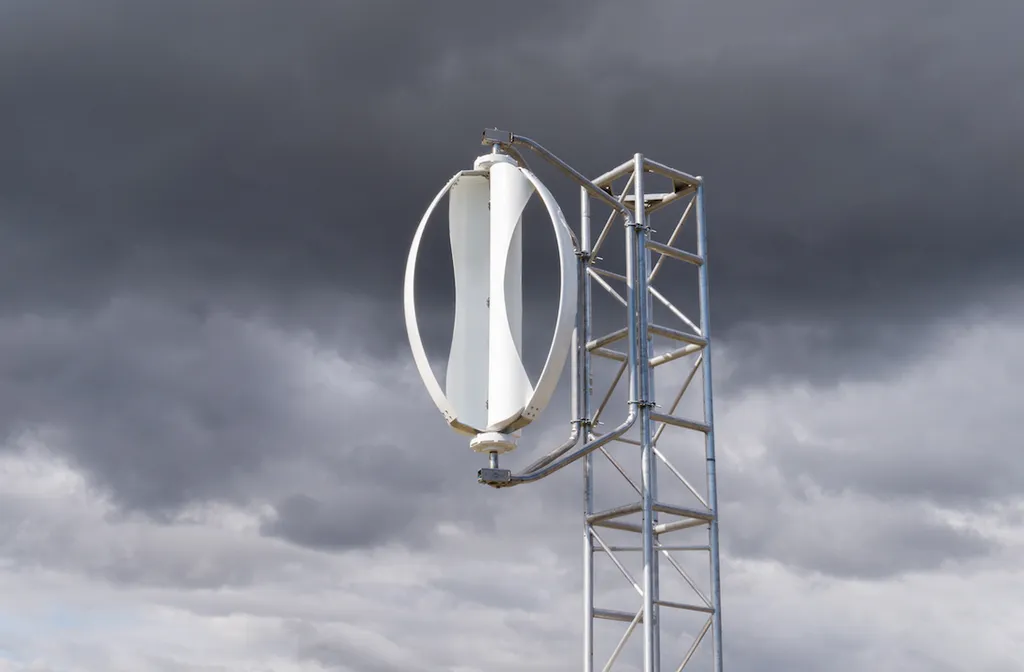Are you considering a greener way to power your home or business? The answer might be whirling in the wind. We’re talking about small wind turbines, compact powerhouses that can significantly cut your carbon footprint and potentially save you money. But what exactly are they, and are they right for you? Let’s find out.
Understanding Wind Power Basics
Before diving into the specifics of small wind turbines, let’s ground ourselves in the fundamentals of wind energy. It all starts with the sun. Solar energy heats the Earth unevenly, creating temperature differences. These differences drive air movement, which we experience as wind. Wind carries kinetic energy, and a wind turbine is simply a device that converts this kinetic energy into electricity.
Think of it like a water wheel, but instead of water turning the wheel, it’s the wind turning the blades. These blades are connected to a generator, which then produces electricity. The amount of electricity generated depends on several factors, including the size of the blades, the wind speed, and the efficiency of the generator. What might surprise you is how accessible this technology has become.
What Defines Small Wind Turbine?
The term small wind turbine isn’t just a cute descriptor; it refers to a specific size and power output. Generally, these turbines range in size from a few feet to over a hundred feet tall, with power capacities typically between a few hundred watts and 100 kilowatts. This makes them ideal for residential, agricultural, and small commercial applications.
Unlike their colossal cousins in wind farms, small wind turbines are designed for localized energy production. They can be connected to the electrical grid, allowing you to sell excess electricity back to the utility company, a process known as net metering. Alternatively, they can operate independently, providing power to off-grid locations such as cabins, farms, or remote communication sites.
Advantages of Embracing Wind Energy
Why would you consider installing a small wind turbine? The benefits are numerous and compelling.
-
Renewable Energy Source – Wind is a clean, renewable resource. Unlike fossil fuels, it doesn’t produce greenhouse gasses or contribute to air pollution. By generating your own electricity from the wind, you’re reducing your reliance on fossil fuels and helping to combat climate change.
-
Cost Savings – While the initial investment in a small wind turbine can be significant, the long-term cost savings can be substantial. Wind is free, so once the turbine is installed, your electricity costs drop dramatically. Depending on wind conditions and energy consumption, you could even eliminate your electricity bill altogether.
-
Energy Independence – A small wind turbine offers a degree of energy independence. You’re less vulnerable to fluctuating energy prices and disruptions in the power grid. This can be especially valuable in rural areas where power outages are more common.
-
Environmental Benefits – Beyond reducing your carbon footprint, small wind turbines can also have positive impacts on wildlife. Modern turbines are designed to minimize bird and bat mortality. Also, unlike large wind farms, small wind turbines typically have a smaller physical footprint, minimizing land use impact.
Considerations Before Taking the Plunge
Before you rush out to buy a small wind turbine, there are several factors to consider.
-
Wind Resource – The most crucial factor is the availability of wind at your location. A site with consistently strong winds is essential for optimal energy production. You can assess your wind resource by consulting wind maps, using anemometers to measure wind speed, or contacting a wind energy consultant.
-
Zoning and Permitting – Local zoning regulations and permitting requirements can vary widely. Some areas may have restrictions on the height or placement of wind turbines. It’s important to research these regulations and obtain the necessary permits before installation.
-
Turbine Selection – There are many different types of small wind turbines available, each with its own characteristics and performance capabilities. Factors to consider include the turbine’s size, power output, efficiency, and noise level. Consulting with a wind energy professional can help you choose the right turbine for your needs.
-
Installation and Maintenance – Installing a small wind turbine is not a DIY project. It requires specialized knowledge and equipment. It’s best to hire a qualified installer with experience in wind energy systems. Also, regular maintenance is essential to ensure the turbine operates efficiently and safely.
The Future is Breezy
Small wind turbines are not a silver bullet for all energy needs. However, they represent a powerful tool for individuals and businesses seeking to embrace renewable energy and reduce their environmental impact. As technology advances and costs continue to decrease, small wind energy systems promise to become an increasingly attractive option for sustainable power generation. Are you ready to catch the wind?
